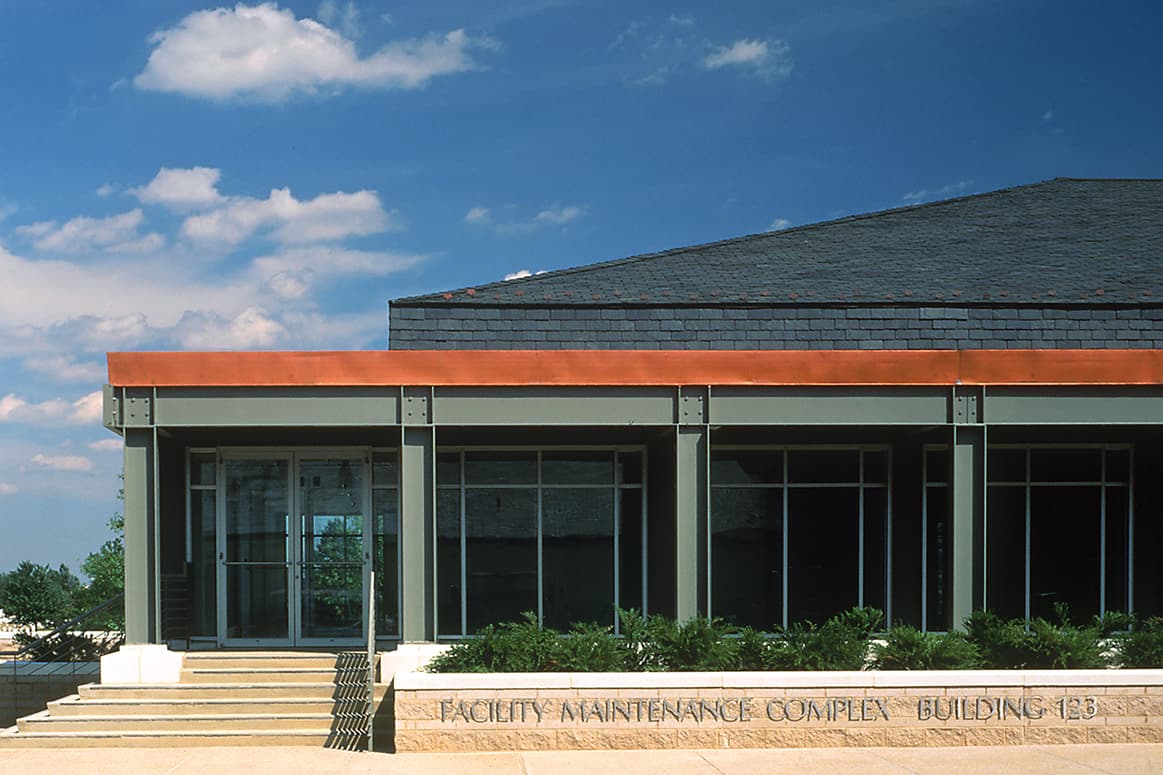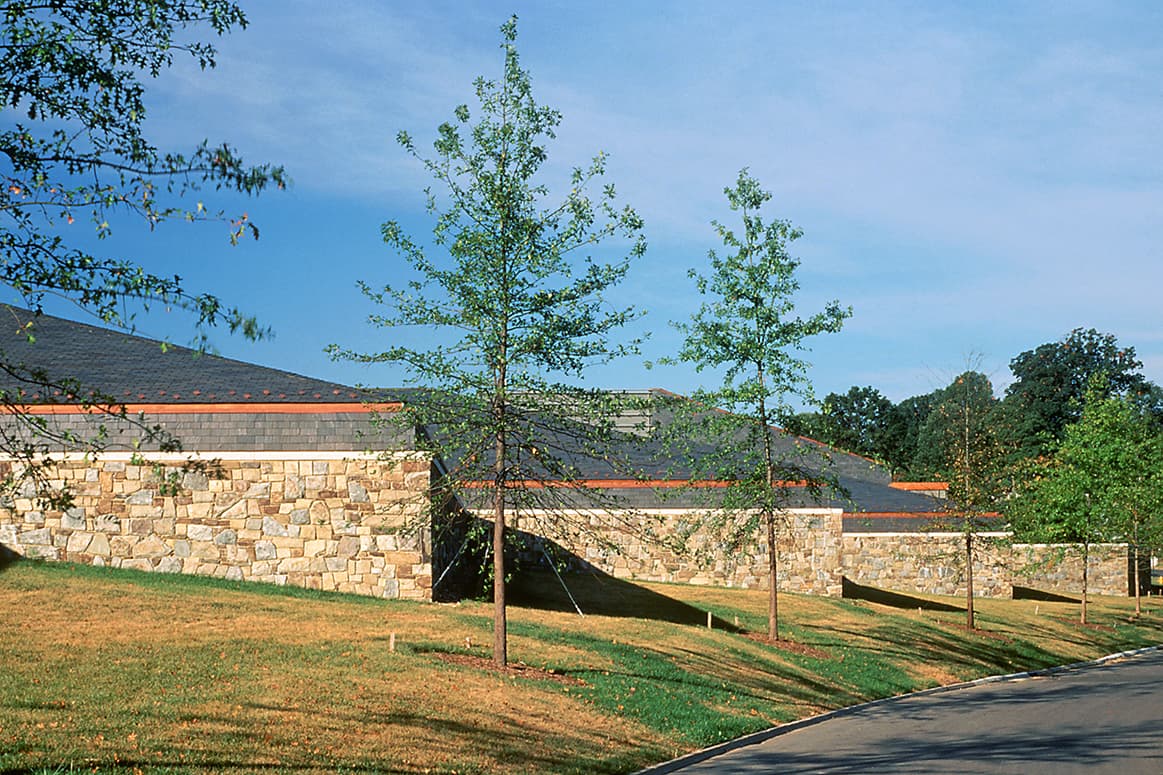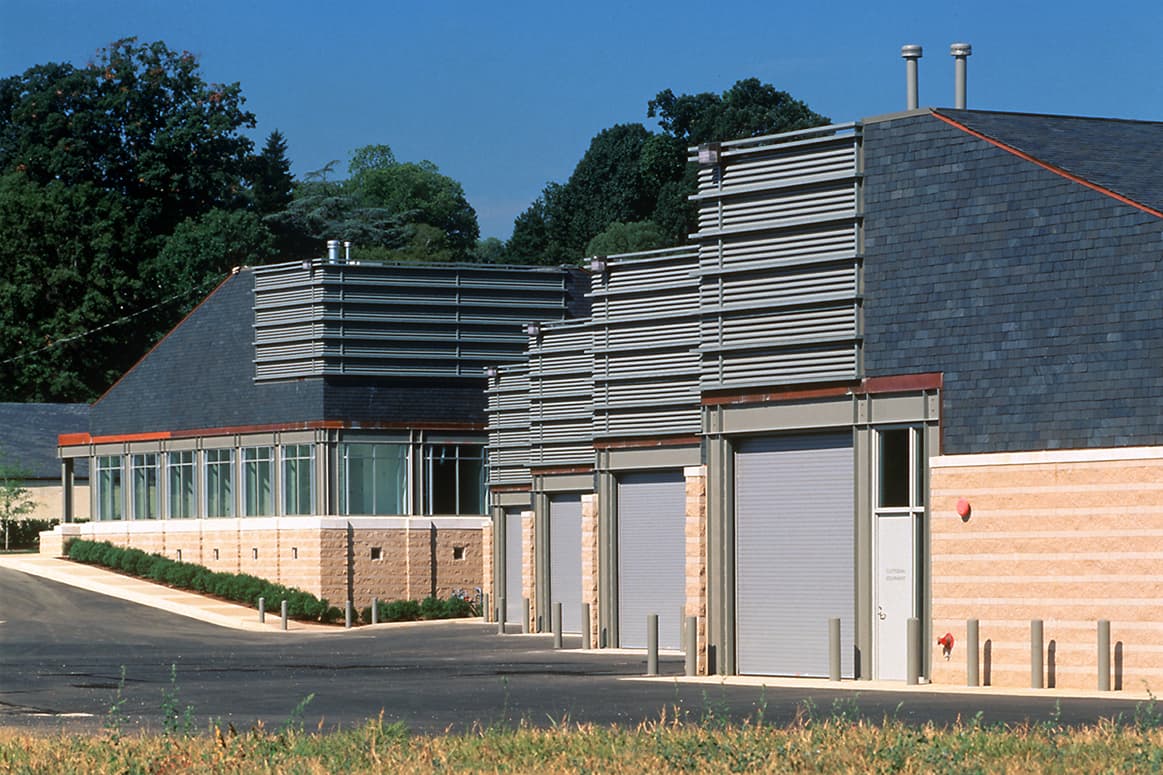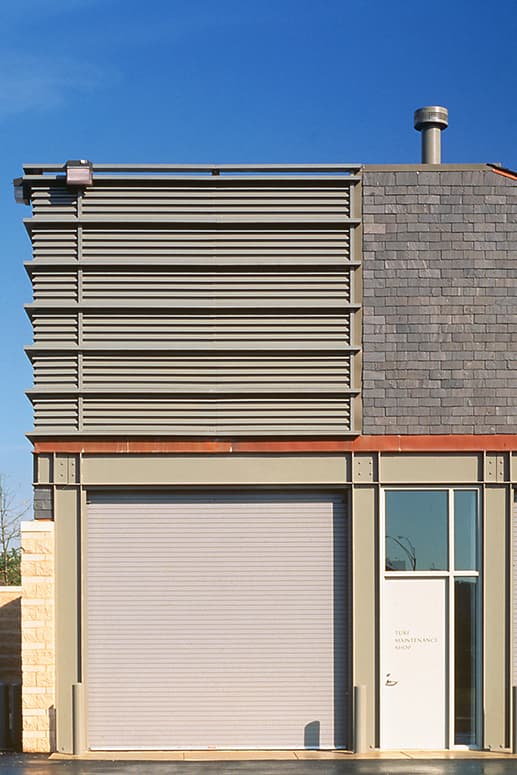Context
The Arlington National Cemetery is a final resting place for those in the military who have served our Nation and provides a haven of beauty and reverence for more than three million annual visitors. The 639-acre grounds are comprised of land once owned by George Washington Parke Curtis, grandson of Martha and George Washington, and later occupied by Confederate General Robert E. Lee. In 1864, the property became a Civil War burial site when the War Department officially set aside approximately 200-acres for use as a military cemetery. Since then, the Arlington National Cemetery has evolved into a sacred national shrine and a gravesite for more that 400,000 men and women who have honorably sacrificed their lives. As the cemetery grew and evolved over time, there came need for a consolidated facility for burial operations, grounds maintenance, and vehicle storage. Recognizing the sacred natural of the site, the facility needed to adequately house these utility functions while screening operations and providing an appropriate backdrop for ceremonial processions and funerals.
Solution
The Arlington National Cemetery is a final resting place for those in the military who have served our Nation and provides a haven of beauty and reverence for more than three million annual visitors. The 639-acre grounds are comprised of land once owned by George Washington Parke Curtis, grandson of Martha and George Washington, and later occupied by Confederate General Robert E. Lee. In 1864, the property became a Civil War burial site when the War Department officially set aside approximately 200-acres for use as a military cemetery. Since then, the Arlington National Cemetery has evolved into a sacred national shrine and a gravesite for more that 400,000 men and women who have honorably sacrificed their lives. As the cemetery grew and evolved over time, there came need for a consolidated facility for burial operations, grounds maintenance, and vehicle storage. Recognizing the sacred natural of the site, the facility needed to adequately house these utility functions while screening operations and providing an appropriate backdrop for ceremonial processions and funerals.



